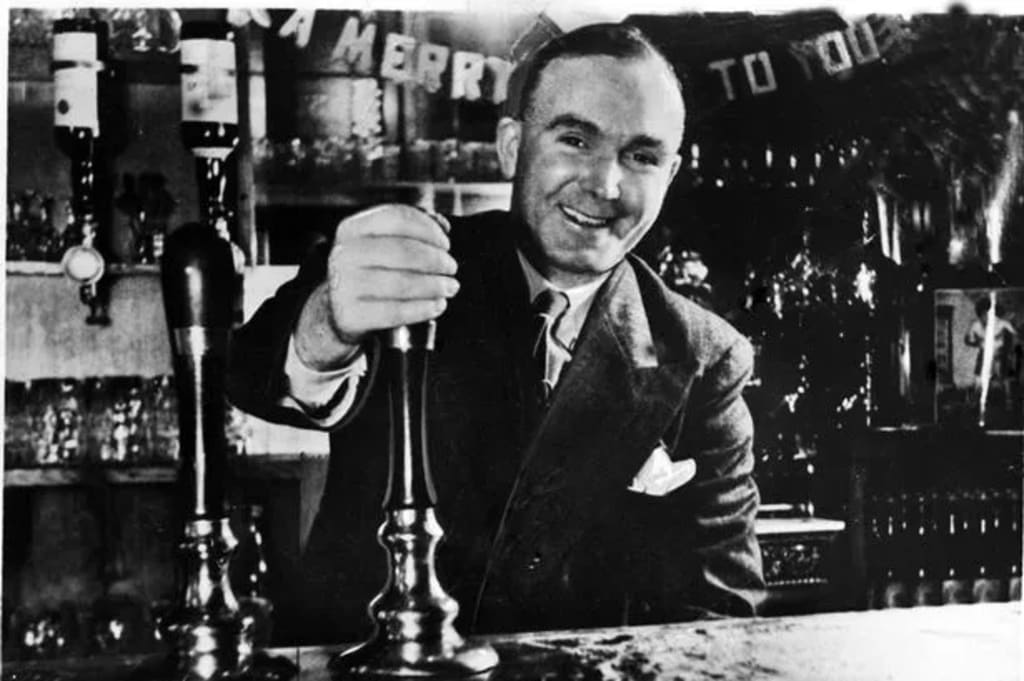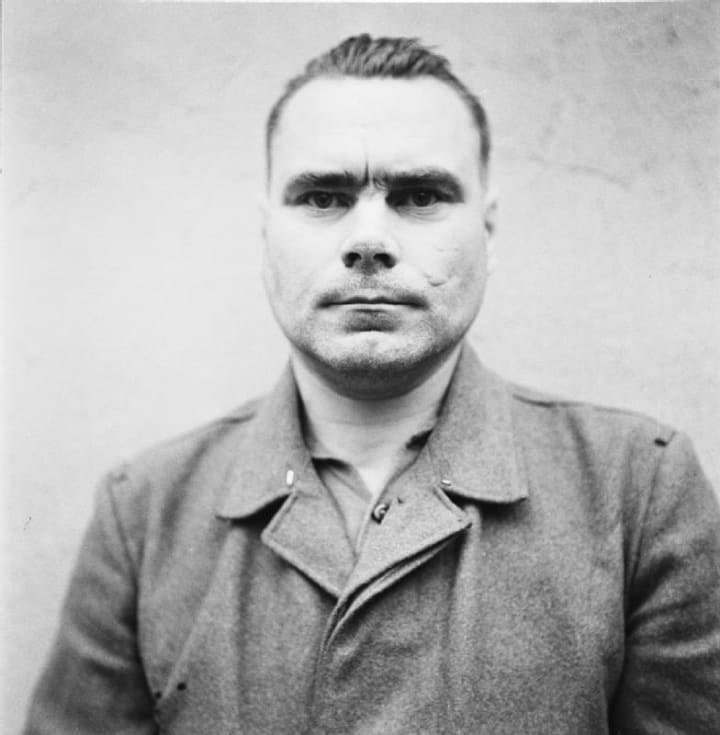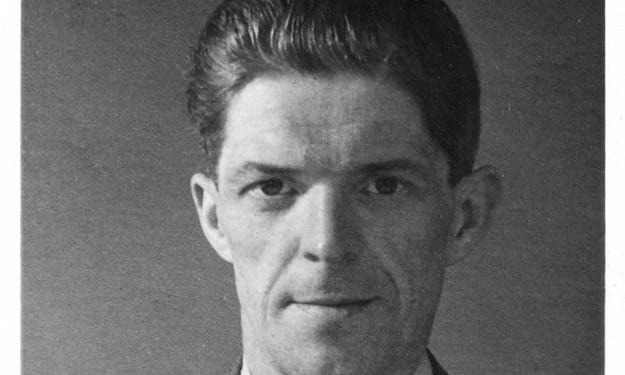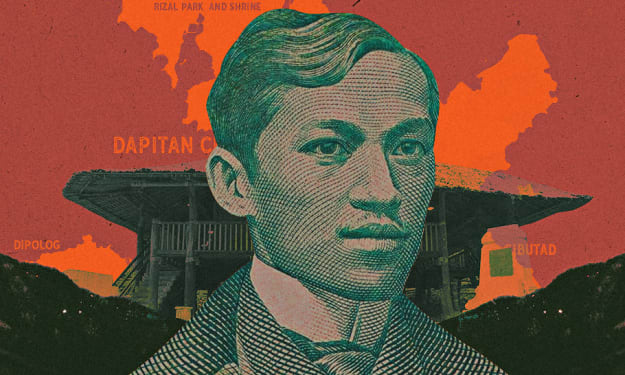Content warning
This story may contain sensitive material or discuss topics that some readers may find distressing. Reader discretion is advised. The views and opinions expressed in this story are those of the author and do not necessarily reflect the official policy or position of Vocal.
Albert Pierrepoint
The Smiling Pub Landlord and the Grim Executioner

Introduction: The Curious Duality of Albert Pierrepoint
Albert Pierrepoint's life was a tapestry woven with contrasting threads. At first glance, he was the jovial pub landlord, pulling pints and singing along with patrons to tunes like "Danny Boy." Yet, in the shadows of the alehouse, lurked another persona—a clinical executioner responsible for the deaths of some of the most notorious figures of the 20th century.
Born in 1905 into a family steeped in the trade of execution, Pierrepoint’s fate seemed preordained. His father, Henry, and uncle, Thomas, were executioners before him. As a young boy, his aspirations echoed an eerie foretelling of his future—declaring in school essays his desire to be the "Britans Official Executioner."
The Evolution of a Hangman: Pierrepoint's Familial Legacy
The Pierrepoints’ familial legacy, steeped in the art of execution, sets the stage for Albert Pierrepoint’s unique journey. His father, Henry, and uncle, Thomas, laid the groundwork for his entrance into this eerie profession. Their influence on young Albert extended beyond mere inspiration; it was a destiny almost predetermined. His upbringing, punctuated by the diaries of Uncle Tom and fatherly recommendations, shaped his worldview, ingraining the solemnity of his future task.
Albert’s apprenticeship wasn’t solely within the confines of the gallows. His early career spanned the textile industry and a brief spell as a grocer, painting a picture of a man destined for a different vocation. However, fate steered him towards the executioner’s noose, a pivot he embraced with a mix of professionalism and a peculiar sense of duty.
The Meticulous Craft of Execution: Pierrepoint's Methodology
Pierrepoint’s expertise transcended mere procedure; it was an intricate craft honed over the years. His meticulous attention to detail stands as a testament to his commitment to humaneness within the grim confines of execution. Each hanging was a delicate dance of precision, where the length of the rope, the weight of the convict, and the drop height were meticulously calibrated to ensure a swift and dignified end.
His meticulous approach wasn’t confined to the execution alone; it extended to his demeanour and attire. Immaculately dressed, and diminutive in stature, he commanded both precision and respect. His professionalism stood in stark contrast to the stereotype of a grim executioner; a man who, behind the shadows of the scaffold, upheld dignity in the face of death.

Beyond the Gallows: Pierrepoint the Publican
The publican persona of Albert Pierrepoint served as a veil, concealing the grim reality of his alternate life. As he pulled pints and sang songs in the friendly atmosphere of the "Help the Poor Struggler," patrons were unaware of the dual nature of their jovial landlord. Here, amidst the laughter and clinking of glasses, Pierrepoint managed to keep a significant part of his life under wraps.
The pub, with its convivial air, stood as an incongruous backdrop to the grim reality of his profession. Pierrepoint managed a delicate dance, segregating his dual identities—an executioner by duty and a genial publican by choice.
Pierrepoint’s Ethical Conundrum: A Struggle with Capital Punishment
Albert Pierrepoint's tale transcends the morbid reality of executions, delving into the ethical labyrinth of capital punishment. His intimate experience with the gallows left an indelible mark, driving him to a resolute conclusion—executions did not deter crime. The stark realization that the walk to the gallows neither prevented past crimes nor acted as a deterrent forced Pierrepoint to question the ethical fabric of capital punishment.
His post-retirement advocacy against the death penalty stemmed from a deep conviction that executions solved nothing. This stance, born from years of confronting the condemned, challenges societal perceptions of justice and retribution.

Albert Pierrepoint: A Legacy of Executions
Albert Pierrepoint held a haunting distinction in his career as an executioner: the precise number of lives he ended. Over his tenure, Pierrepoint conducted more than 400 executions, each carrying its weight of moral complexity and societal consequence. Among the notable figures he led to the gallows were some of the most infamous criminals of the 20th century.
However, it was his involvement in post-World War II Germany that etched his name in history. Tasked under British control, Pierrepoint executed numerous high-ranking Nazi war criminals, including Josef Kramer, the infamous ‘Beast of Belsen.’ Notorious for overseeing concentration camps, Kramer's trial and subsequent hanging marked one of the several war criminals Pierrepoint executed in the aftermath of the war.
This foray into international justice and the execution of war criminals underscored Pierrepoint's unique role beyond the borders of his homeland. It highlighted his pivotal involvement in the trials and sentencing of those involved in some of the darkest chapters of human history.
His career as a British executioner extended beyond domestic boundaries, imprinting his legacy on a global scale and reinforcing his pivotal role in the aftermath of one of the world's most devastating conflicts.
Conclusion: Pierrepoint’s Legacy of Complexity and Reflection
Albert Pierrepoint’s legacy stands as a testament to the duality of human existence. His smiling publican persona concealed a solemn duty, placed side by side the joviality of the alehouse with the gravity of the gallows. His story compels contemplation on the ethical dilemmas surrounding capital punishment, evoking a deeper reflection on morality and justice.
Pierrepoint's life is a canvas where contradictions intertwine—where the smiles behind the bar belie the grim responsibilities of the scaffold. His legacy endures as a profound reminder of the complexities of human morality and the enduring quest for a just society.
About the Creator
Richard Clements
Unearthing the Mysteries of History, Crime, and the Unknown
Delve into the captivating world of history, crime, and mystery through factual writing. Explore the past, unravel human behavior, and solve enigmas.
Enjoyed the story? Support the Creator.
Subscribe for free to receive all their stories in your feed. You could also pledge your support or give them a one-off tip, letting them know you appreciate their work.






Comments
There are no comments for this story
Be the first to respond and start the conversation.